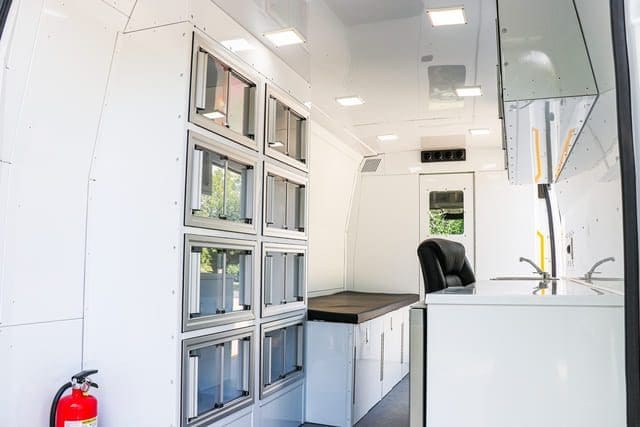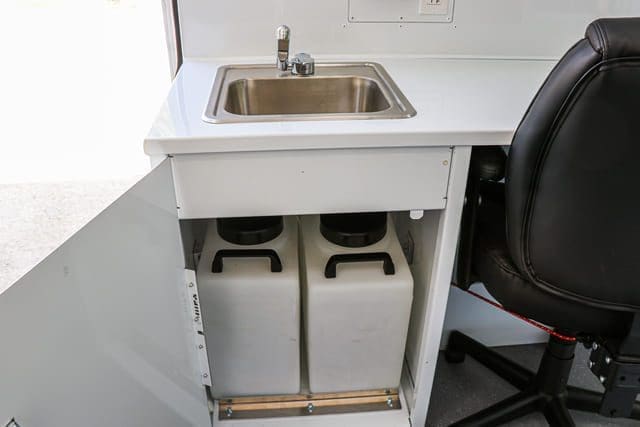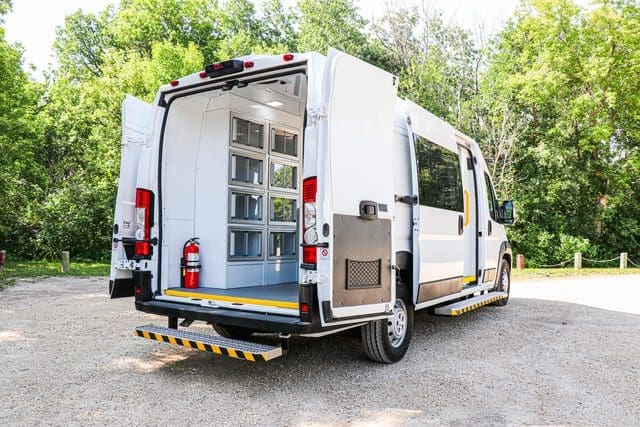Are you a decision-maker in a U.S. healthcare organization and considering buying a mobile clinic? You know there’s a need to reach more people, especially those who can’t easily get to a regular doctor’s office. But you’re also asking yourself, “What’s the real purpose of a mobile clinic?” and “How can it help?” Don’t worry, you’re not alone in feeling a bit overwhelmed.
At AVAN Mobility, we’ve been manufacturing mobile medical units for over a decade, and we’ve learned a thing or two about them over the years. Our goal is to help people help people, and the end result of that is to break down barriers to healthcare and save lives, one mobile clinic at a time. Our mission here is to give you the information you need to make the best decision for your team.
In this first part of our five-part series on mobile clinics, we’ll be diving into the purpose of a mobile health clinic. We’ll cover how these clinics can shake up healthcare delivery, who they help, and the kinds of services they offer. By the end, you’ll get why mobile clinics are a game-changer in U.S. healthcare. So, stick around, and let’s get into the nuts and bolts of mobile health clinics!
What do the stats say on mobile clinics?
Before diving into the purposes of a mobile clinic, let’s take a quick look at some important stats.
- There are currently over 2,000 mobile clinics operating in the U.S.
- These mobile clinics receive 6.5 million visits every year.
- Mobile clinics have an annual savings rate of $36 for every $1 that’s invested in them compared to ER visits.
What are the 3 purposes of a mobile clinic?
A mobile clinic has many purposes and can be used for many different things. Let’s look at the top three.
1. Breaking barriers to healthcare

The primary purpose of a mobile clinic is to break down barriers to healthcare by bringing medical services directly to people who typically lack access to them.
Imagine these four points:
- An individual lives in a rural area, hours away from the nearest hospital.
- Another patient doesn’t have health insurance and constantly worries about healthcare costs.
- An elderly person has limited mobility or a disability that makes traveling difficult.
- And yet another person simply can’t afford transportation to get to a hospital.
That’s where a mobile clinic comes in. Mobile clinics can:
Travel to underserved areas: They set up shop in community centers, parking lots, or even right on the street.
Provide essential services: They provide vaccinations, check-ups, and screenings without the hassle of traveling long distances.
Offer affordable care: In many cases, mobile health clinics offer free or low-cost services for those without insurance.
Provide accessible healthcare: Mobile medical clinics help people with limited mobility or disabilities get the care they need.
Let’s look at an example:
Consider Mark. He lives in a remote rural town that’s eight hours away from the nearest hospital. He can’t afford a car because he can’t work due to his disability, making traveling very difficult. For Mark, visiting a doctor regularly is nearly impossible.
But when a mobile clinic rolls into his town, everything changes. The mobile health clinic parks at a local community center near Mark’s house and offers the medical care he’s been in need of for far too long.
Bottom line: Mobile clinics bring healthcare to the people, ensuring that everyone, no matter where they live, has access to the medical services they need.
2. Preventive healthcare

Another key purpose of a mobile clinic is to provide preventive care. Mobile clinics play an important role in catching health issues early and preventing them from becoming serious problems later on.
Here’s how:
Health screenings: Mobile clinics offer screenings for conditions like diabetes, high blood pressure, and cholesterol levels. Early detection can make a huge difference.
Vaccinations: They provide essential vaccinations to protect against diseases like flu, measles, and hepatitis.
Health education: Mobile clinics educate people on managing their health and recognizing early symptoms of potential health issues.
Let’s look at another example of how mobile clinics provide preventive care.
A patient named Jillian lives in a small town with no hospital nearby and has been feeling off for months—frequent thirst, fatigue, and blurry vision. Without a nearby hospital, she had no idea what was wrong.
One day, a mobile health clinic was set up in her town. Jillian decided to stop by and get checked out. The clinic staff conducted a simple blood sugar test and discovered that Jillian had diabetes.
Thanks to the mobile clinic, Jillian got the diagnosis she needed. The healthcare team provided her with medication, taught her how to manage her diet, and scheduled regular follow-ups to monitor her condition. Without that mobile clinic, Jillian might have continued to suffer without knowing why.
Bottom line: Mobile clinics offer essential preventive care services that catch health issues early and help manage them effectively. They make a huge difference in communities where access to regular healthcare is limited.
3. Mobile clinics save lives

One of the most important things a mobile clinic does is save lives. These clinics give people medical care when they need it the most, which can make a life-saving difference.
Here’s how:
Managing chronic diseases: A mobile health clinic can offer regular check-ups and help with medicines for things like heart disease and asthma to prevent bigger problems.
Providing consistent care: Mobile clinics come to people who might otherwise skip doctor visits, making sure they get the care they need.
Building trust: When mobile clinics regularly visit a community, it establishes trust with patients, encouraging them to seek help before it’s too late.
Look at the example below of how mobile clinics can save lives.
Think about Jim. He’s a retired factory worker living far away from the nearest doctor. Jim has high blood pressure and heart disease. Without regular check-ups, Jim’s conditions are a ticking time bomb.
Thankfully, he learns that a mobile health clinic visits his town every month. They check his health, give him his medicine, and help him manage his condition. One day, the nurse notices Jim’s blood pressure is really high. She changes his medicine and makes a plan to see him every month. This regular care keeps Jim healthy and stops a possible heart attack.
Bottom line: Mobile clinics save lives by helping people manage their health, providing regular check-ups, and dealing with urgent problems.
Learn more about the mobile clinic
You came to this article to understand the purpose of a mobile clinic and how it can benefit your organization and the patients you serve. Now you know that mobile clinics:
- Break barriers to healthcare
- Provide preventive care
- Save lives by managing chronic conditions
Stay tuned for part 2 of our mobile clinic series. In the next article, we’ll discuss how mobile clinics bridge the gap in rural and urban healthcare.
At AVAN Mobility, we’ve been dedicated to enhancing healthcare accessibility for over a decade. Our mobile clinics are designed to bring quality medical services directly to those who need them most. We believe in making healthcare accessible, affordable, and convenient for everyone. We’re here to help you make the best decision for your organization. If you have any questions, click the button below to talk to a mobility expert.





